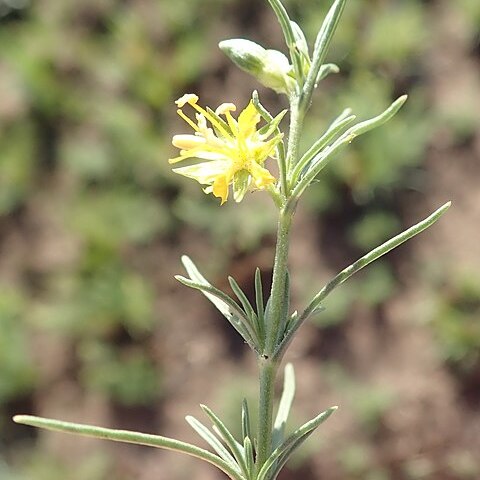Petals pale to bright yellow, sometimes drying with a maroon area at base, varying from strap-like to orbicular, 2·3–7 x 0·8–5 mm., rounded, acute or occasionally acuminate at apex; margin ± entire to very irregularly dentate; mid and lateral veins usually apparent, usually hairy at the base inside.
An erect to straggling or diffusely branched, cushion-like herb or suffrutex, annual or biennial or perennial, 3·5–55 cm. tall, often with a woody tap-root or rhizome, entirely glabrous, pubescent or densely glandular-hairy.
Sprawling, shortly hairy shrublet from a woody caudex, mostly up to 300 mm tall. Leaves opposite, linear-oblanceolate. Flowers paired, axillary, yellow fading maroon or brown.
Filaments 2–5·4 mm. long, glabrous or sparsely hairy, base with a membranous, hairy scale (variable in shape and size) or only with hairs; anthers 1–2·5 mm. long.
Shortly hairy shrublet from a woody caudex, mostly to 30 cm. Leaves opposite, linear-oblanceolate. Flowers paired, axillary, yellow fading maroon or brown.
Leaves linear-lanceolate, 0·7–5·9 x 0·05–0·75 cm., linear or narrowly linear (or elliptic in 1 S. African subsp.), acute at apex, narrowed to base.
Style-bases gradually and not markedly thickened, free to the disk, glabrous or rarely with short patent hairs; styles 4–6·6(8) mm. long, glabrous.
Seeds straw-coloured to pale brown, ± ovoid or spindle-shaped, 0·3–0·55 mm. long, with distinct longitudinal ridges.
Pedicels 0·4 mm. long (sessile or subsessile in Angolan and SW. African varieties).
Capsule 1·5–2·9 mm. long, glabrous to densely pubescent.
Peduncles 0·2–1·5 cm. long.

